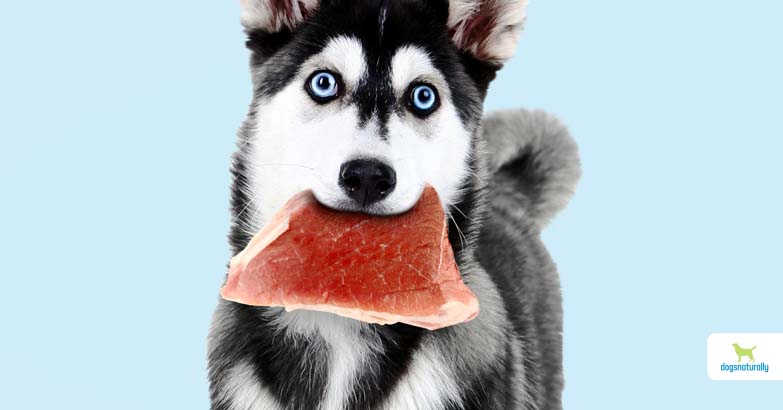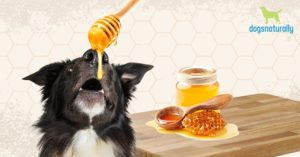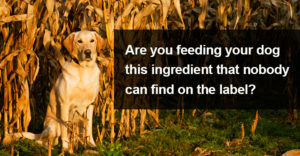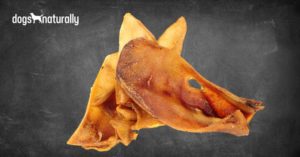Does your dog get enough protein in his diet? Chances are he does … but he can still suffer from protein deficiency.
Proteins are chains of little building blocks called amino acids. And your dog needs to get 10 of these essential amino acids in his food or his health will suffer. Many foods are high in protein, but don’t have the necessary amount of these critical amino acids your dog needs to thrive.
The resulting deficiency can cause problems with skin, hormones, growth and soft tissue. It can even cause behavioral changes. So getting the proteins right is pretty important.
So let’s take a look at how even raw diets can be deficient in protein … and what you can do to make sure your dog gets enough. But before we do, you need to understand just a little more about amino acids …
What Are Amino Acids?
Amino acids are the building blocks of proteins. They form chains and fold into three-dimensional shapes to form different proteins. Their final shape depends on their job. When your dog eats protein his body breaks it down into amino acids so it can absorb and use them.
Proteins and amino acids are essential for all cells in every part of the body. It’s one of the major macronutrients, along with fat and carbohydrate and provides structure to the body. It helps form ligaments, tendons, bones, hair and nails. Amino acids also have many other important functions in your dog.
- Hormone control
- Enzyme activity
- Immune function
- Tissue growth and repair
- Metabolism
- Antibodies
- Brain chemicals and mood
- Production of vitamins (B3)
- Brain, eye and heart function
So if your dog isn’t getting enough of the amino acids, his body won’t be able to function properly.
There are 22 amino acids in total. All these amino acids are important to your dog and his cells, but 10 of them are essential. That means your dog can’t make them in his body, so he must get them through his diet.
Essential Amino Acids
- Arginine – Rids the body of ammonia, which is a byproduct of protein metabolism. It’s also a key component of proteins in the body. And it stimulates the release of hormones that regulate blood sugar and helps with cell signaling.
- Histidine – Plays a key role in oxygen exchange in the lungs and tissues. Helps with tissue growth and repair and is a precursor for histamine, part of immune function.
- Isoleucine – Helps form proteins in your dog’s body.
- Leucine – Regulates the other amino acids in the body and protein synthesis. Also controls insulin levels and helps in the growth and repair of bones, skin and muscles.
- Lysine – Found in collagen, which plays an important role in the structure of proteins and supports soft tissues. Also helps regulate cell metabolism.
- Methionine – Used to make proteins and is required for protein synthesis and normal growth. Also helps regulate many enzymes, as well as cell division and growth.
- Phenylalanine – Converts to tyrosine, a nonessential amino acid. It’s used for protein structure and is necessary for normal growth. Also helps regulate hormones, cell replication and signaling.
- Threonine – Helps form proteins and tooth enamel, as well as collagen and elastin, which both help maintain soft tissue structure and elasticity. Control the activity of other proteins and enzymes. It also plays a role in immune health and the production of antibodies.
- Tryptophan – Needed for normal growth and nitrogen balance. It’s also used to manufacture the hormone serotonin, which is a chemical messenger that can affect mood and heart function.
- Valine – Required for muscle metabolism and tissue repair. It’s used as an energy source by muscle tissue as well.
The remaining 12 nonessential amino acids are all made in your dog’s liver.
- Alanine
- Asparagine
- Aspartic Acid
- Cysteine
- Cystine
- Glutamine
- Glutamic Acid
- Glycine
- Hydroxyproline
- Proline
- Serine
- Tyrosine
You may also hear taurine included as a nonessential amino acid. It isn’t used to make proteins and floats freely in the tissue. And technically taurine isn’t an amino acid because it has bonds that behave differently than other amino acids. But like amino acids, it does play a key role in most organs and helps with:
- Brain health
- Heart health
- Eye health
- Immune function
- Healthy blood
- Reproduction
- Immune health
To make everything a bit more confusing, sometimes nonessential amino acids can become essential. I’ll give an example of that in a bit. But first, let’s look at what happens to your dog if he’s missing any of these essential amino acids.
Signs Of Protein Deficiency In Dogs
The symptoms of a protein or amino acid deficiency will depend on which amino acids your dog is missing. But the most common signs include:
- Reduced growth rate and milk production
- Poor coat, skin and bristle hair
- Anorexia (weight loss)
- Anemia (lack of healthy blood cells)
- Change in mood
And a deficiency can have an adverse effect on all your dog’s organs, immune system and cells. It can also affect the mucosal function and permeability in the small intestine, which can lead to leaky gut. Some deficiencies can even cause liver disease, depression, lameness and neurological issues.
Clearly, getting amino acids in the proper amounts is critical to your dog’s health. So let’s talk about how you can make sure your dog’s diet contains enough of them.
Not All Proteins Are The Same
When your dog eats proteins, they’re broken down into amino acids. Your dog’s body absorbs the amino acids and uses them for their many different functions.
Your dog can get amino acids from animal and plant proteins. But not every protein your dog eats is a complete protein, which contains all the amino acids he needs in the right amounts. In fact, most aren’t.
So to figure out which proteins are better, you need to look at the biological value (BV). BV considers the number of different essential amino acids in the protein and the amounts of each.
All foods get scored according to their biologic value using a number between 1 and 100. If all the amino acids are present and in a high enough amount to be of value to your dog … that protein has a high biological value.
If one or more of the essential amino acids was missing or they’re present in low amounts, then a protein would have a low biological value. And the biological value of any protein can only be as high as the amino acid that’s found in the smallest amount (called the limiting amino acid).
Let’s take a look at the biological value of some common foods …
- Eggs … 100
- Milk … 93 (but don’t forget, a lot of dogs are lactose intolerant)
- Chicken … 79
- Fish … 76
- Beef … 75
- Wheat gluten … 64
- Tofu … 64
- Rice … 59
- Oatmeal … 55
- Bread … 54
- Lentils … 50
- Wheat flour … 41
You probably noticed that proteins from animal sources are much more complete than those from plant sources. If you’re feeding your dog grains, these incomplete sources of protein can start to cause amino acid deficiency in your dog. That’s because they’re quite low in the essential amino acids.
RELATED: Are these crappy proteins hiding in your dog’s kibble?
How To Boost Your Your Dog’s Protein
So now you know why you should be watching your dog’s amino acid intake. Now let’s look at a few simple rules to make sure your dog’s not going to suffer any protein deficiency.
1. Feed A Species Appropriate Diet
Because the biologic value of animal-based proteins is generally quite high, your dog will do well on fresh meat and organs. That doesn’t mean plant based proteins are a no, but you should feed them as a compliment to animal proteins. Plants shouldn’t be the main source of protein.
Here are good whole food sources for each amino acid
Arginine – fish, meat, mushrooms, spirulina, sprouted beans and legumes
Histidine – meat, fish, nuts, seeds, eggs
Isoleucine – eggs, spirulina, poultry, game, fish, pork
Leucine – meat, spirulina
Lysine – meat, fish, shellfish, eggs
Methionine – meat, eggs, dairy (but remember, many dogs are lactose intolerant)
Phenylalanine – meat, fish, eggs, milk
Threonine – meat, eggs, liver, fish, seeds, nuts
Tryptophan – meat, dairy
Valine – meat, fish, seeds, nuts, mushrooms
If you aren’t ready to start feeding raw, consider freeze-dried.
But steer clear of kibble … they mostly use plant based proteins. In fact, that’s why most manufacturers have to add amino acids to their foods. It helps make up for the incomplete (cheap) source of protein. You’ll often see them on the ingredient panel with L- or DL- in front of them. The L means the amino acid is synthetic and made in a lab. It’s not from real food.
RELATED: Switching to raw can be easy …
2. Skip The Cooked Foods
Biologic value isn’t the whole story … it only measures the potential quality of a protein. The actual quality of protein depends on your dog’s ability to digest it.
Cooking foods denatures proteins … it changes their shape and structure. This not only causes allergy symptoms in some dogs, it can make the amino acids in the protein less accessible. (That’s another reason kibble is not a good choice, even if it has animal based proteins).
Cooking foods essentially lowers their biologic value. This could leave your dog lacking in some key amino acids … especially taurine and tryptophan.
3. Keep The Fat Low
Most of your dog’s food should be high quality meats. But while meat is high in protein, it can also be really high in fat … and that can cause protein deficiency in your dog.
Just look at the fat and protein content of different ground beefs.
90% Ground Beef
Fat: 10%
Protein: 20%
80% Ground Beef
Fat: 20%
Protein: 17%
70% Ground Beef
Fat: 30%
Protein: 14%
You probably noticed that as the percentage of fat goes up in meats, the amount of protein goes down. That’s because no food can be high in fat and high in protein. Here’s why …
Calories Per Gram
Fat: 9 kcal/gram
Protein: 4 kcal/gram
Carbohydrate: 4 kcal/gram
Fat contains twice as many calories per gram as protein (and carbohydrate). And your dog can only eat so many calories in a day. Here’s why this is a problem …
90% Ground Beef
Calories: 176
80% Ground Beef
Calories: 254
70% Ground Beef
Calories: 332
So now you can see that 70% lean ground beef contains nearly double the number of calories as 90% lean beef. So your dog can only eat half as much of it or he’ll start to get really fat.
Why is this a problem?
The 70% lean ground beef already contains less protein than the 90% lean ground beef … about 6% less. But, you can only feed half as much of this food to your dog because it’s really high in calories. So now your dog will be getting only 1/3 the amount of protein as the dog eating a diet that’s 10% fat.
So a high fat diet will cause not only protein deficiency, but also a vitamin and mineral deficiency.
This is why even dogs fed a raw diet that’s high in animal protein can be deficient in key amino acids. Do you know how much fat is in your dog’s raw diet? You should!
In general, you need to keep the fat content of your dog’s raw diet below 20%. This is especially true in growing puppies who need the protein and extra nutrients to build their bodies.
Variety is also important. Feeding fairly equal amounts of poultry and ruminants will balance the fatty acids and the amino acids.
Conditionally Essential Amino Acids
I mentioned earlier that some nonessential amino acids may become essential. That’s because your dog sometimes can’t produce enough on his own. This is usually because your dog is sick or stressed. When this happens, these amino acids become conditionally essential.
Glutamine And Glutamate
Glutamine and glutamate (a form of glutamic acid) are perfect examples of a conditionally essential amino acid. Glutamine helps repair the digestive tract and reduce inflammation. Normally your dog makes enough of it himself but there are times when you should consider giving him a boost.
When your dog gets stressed or undergoing chemotherapy, he may not produce enough glutamine. You’ll also want to think about giving him a boost if he’s dealing with leaky gut or other digestive issues. Glutamine may also be conditionally essential if your dog is pregnant, lactating or critically ill or is an underweight puppy.
Taurine
Taurine deficiency can also be quite common. But it’s important to avoid because it can cause a heart condition called dilated cardiomyopathy (DCM). In fact, dogs have developed taurine-deficient DCM from commercial pet foods in the past. Here are some risk factors for taurine deficiency:
- Eating cooked or processed diets that are high in fiber.
- Some breeds of dogs are especially susceptible to taurine deficiency. This includes some Spaniels, Retrievers and Newfoundlanders. They can’t make enough of it if their diet contains smaller amounts.
- Dogs suffering from candida or yeast infections can lose taurine through their urine.
- MSG (found in most foods, supplements and vaccines) can cause taurine loss in your dog.
If you suspect your dog might not be getting enough taurine, here are some key facts you should know:
- Taurine is relatively low in lamb, as well as other hoofed animals.
- Taurine content is low in eggs and milk.
- Poultry, fish, liver and heart are good sources of taurine.
- Taurine is virtually absent in plant proteins. That means dogs on most vegetarian and vegan diets will need taurine supplements.
- Cooking and processing foods reduces the taurine content.
Protein is a crucial part of your dog’s diet. But just giving him meat without thinking about essential amino acids, fats or nutrients can cause problems. You need to make sure he’s getting enough protein, and protein that has the amino acids he needs. If he’s not getting enough, you need to work on his diet and find the right balance so he’s as healthy as he can be.













